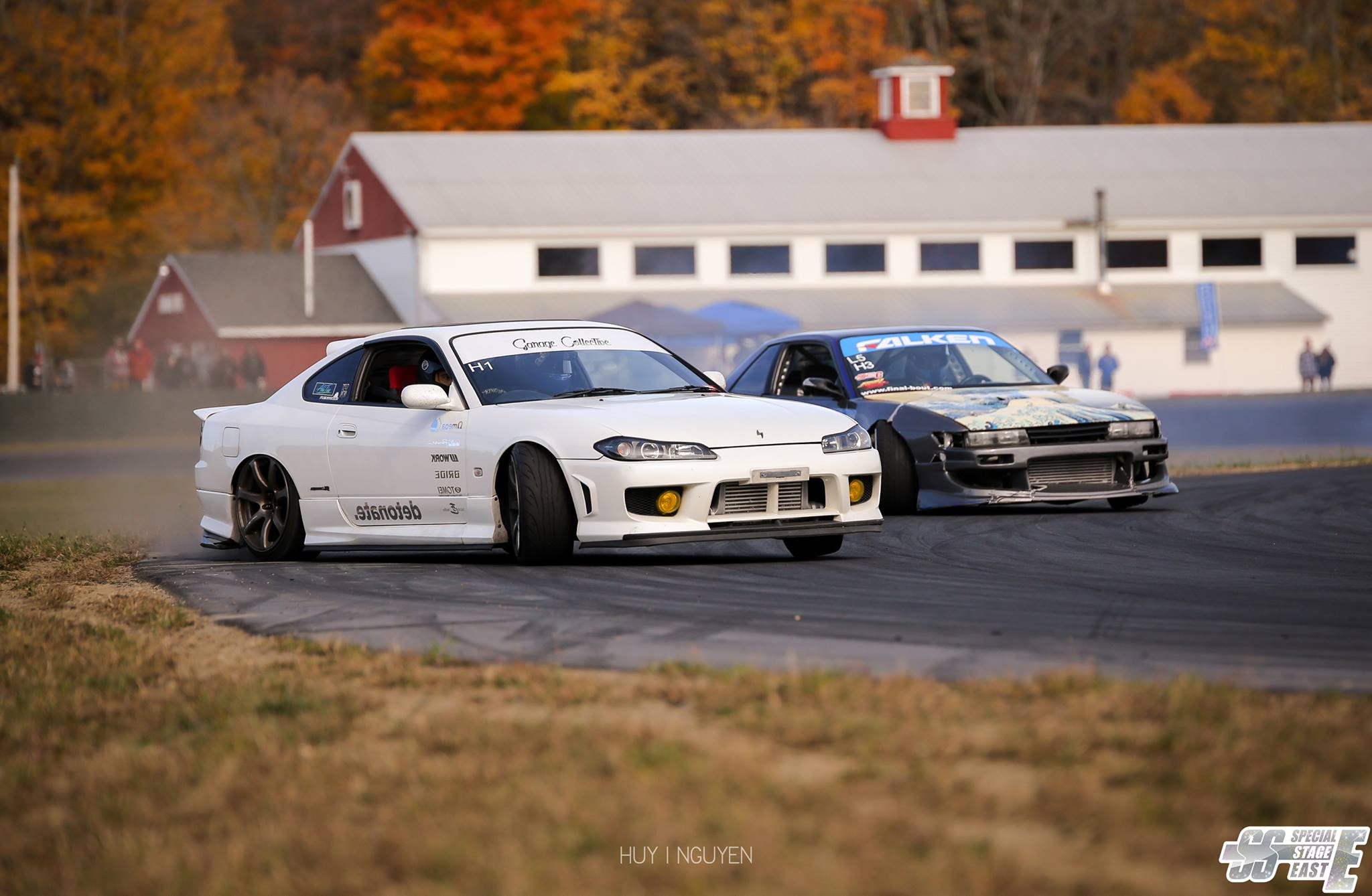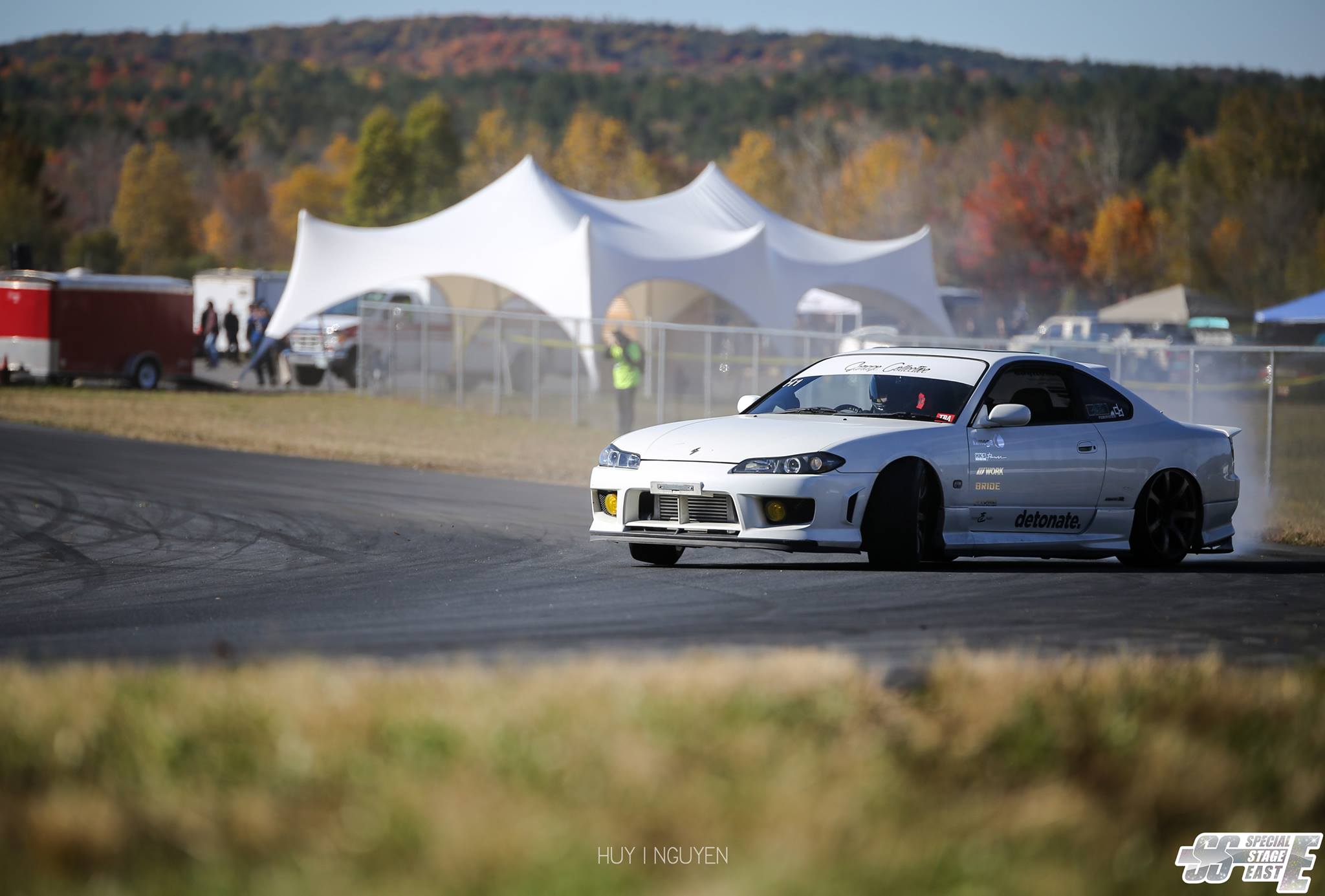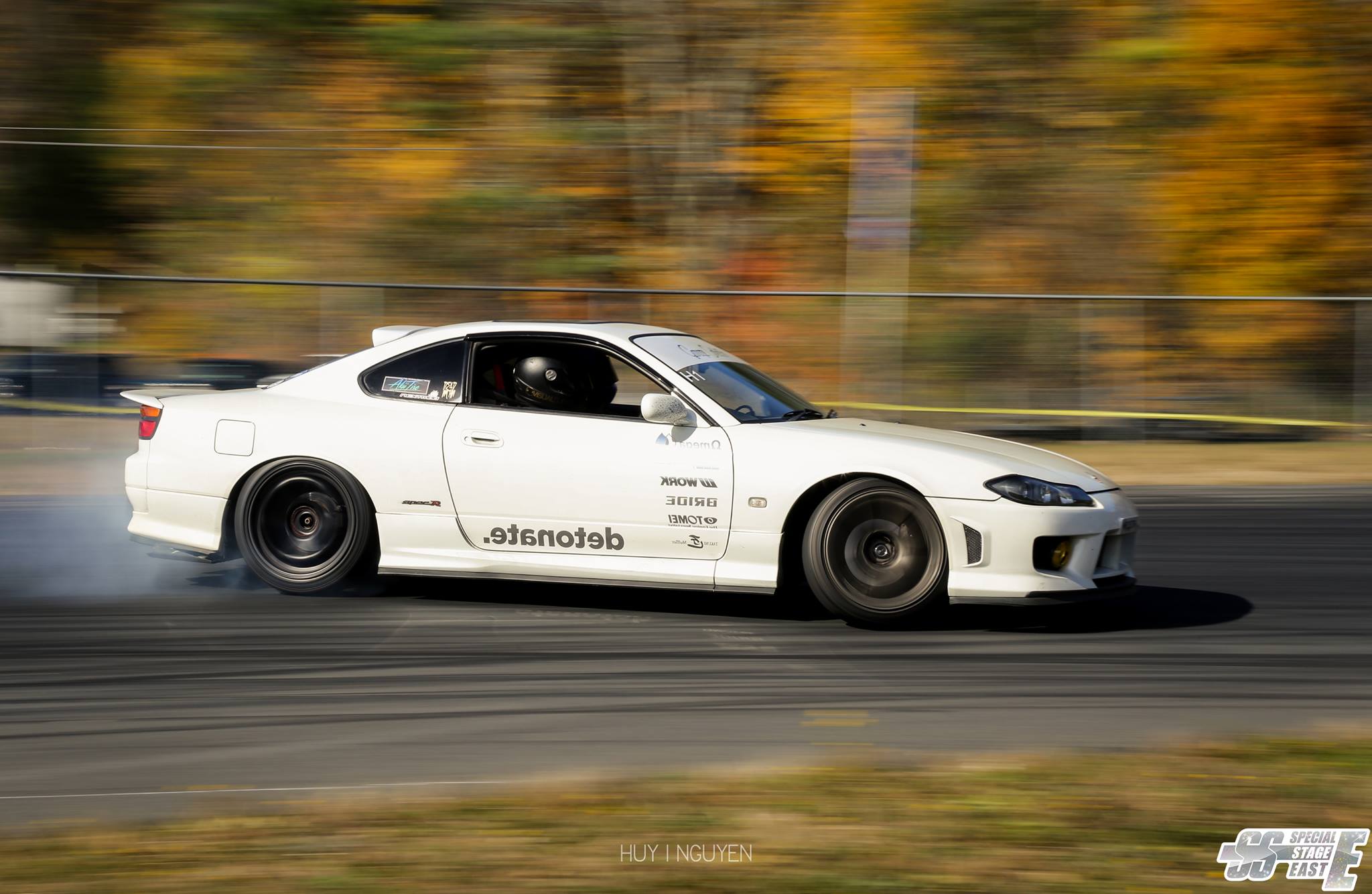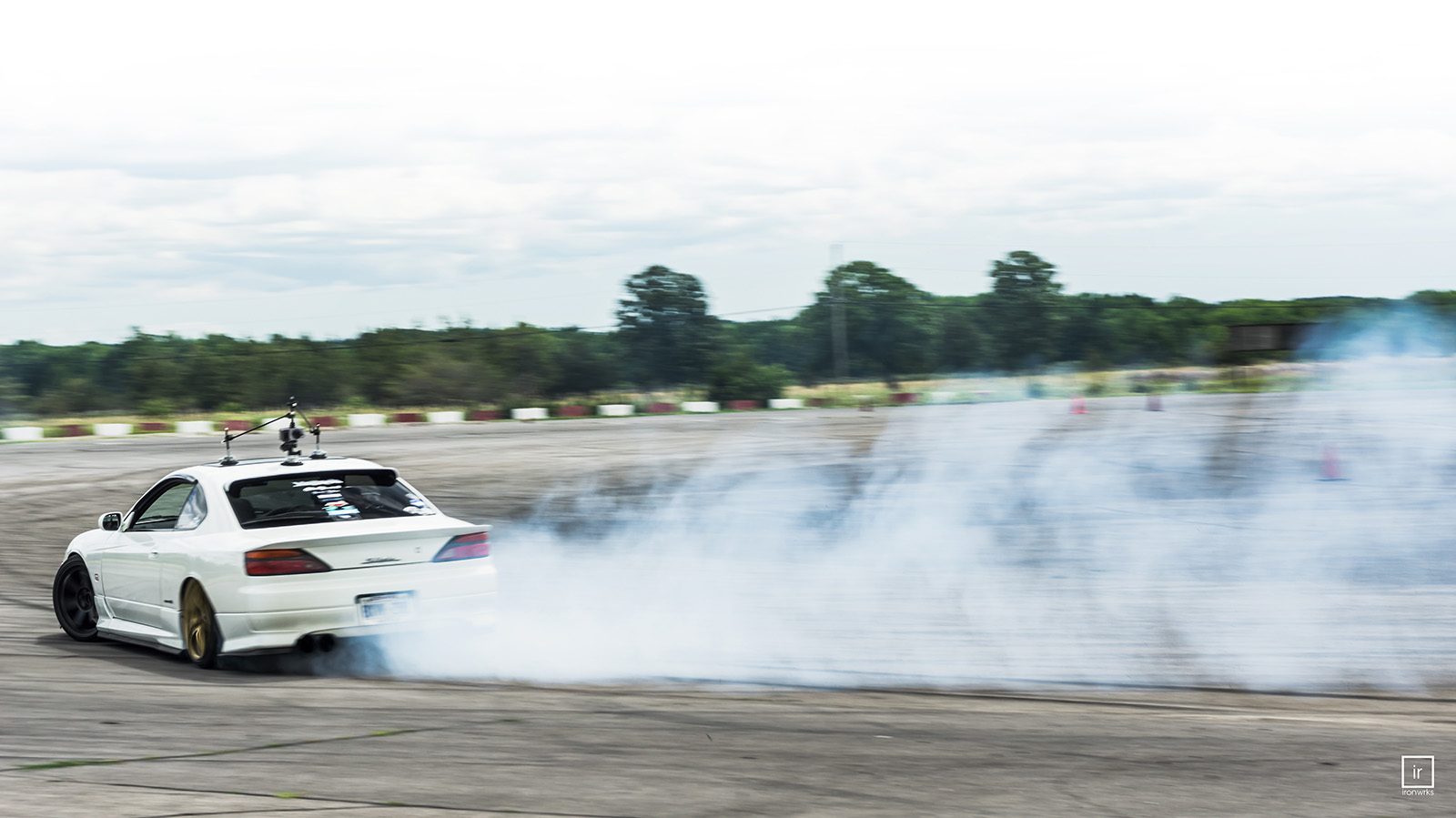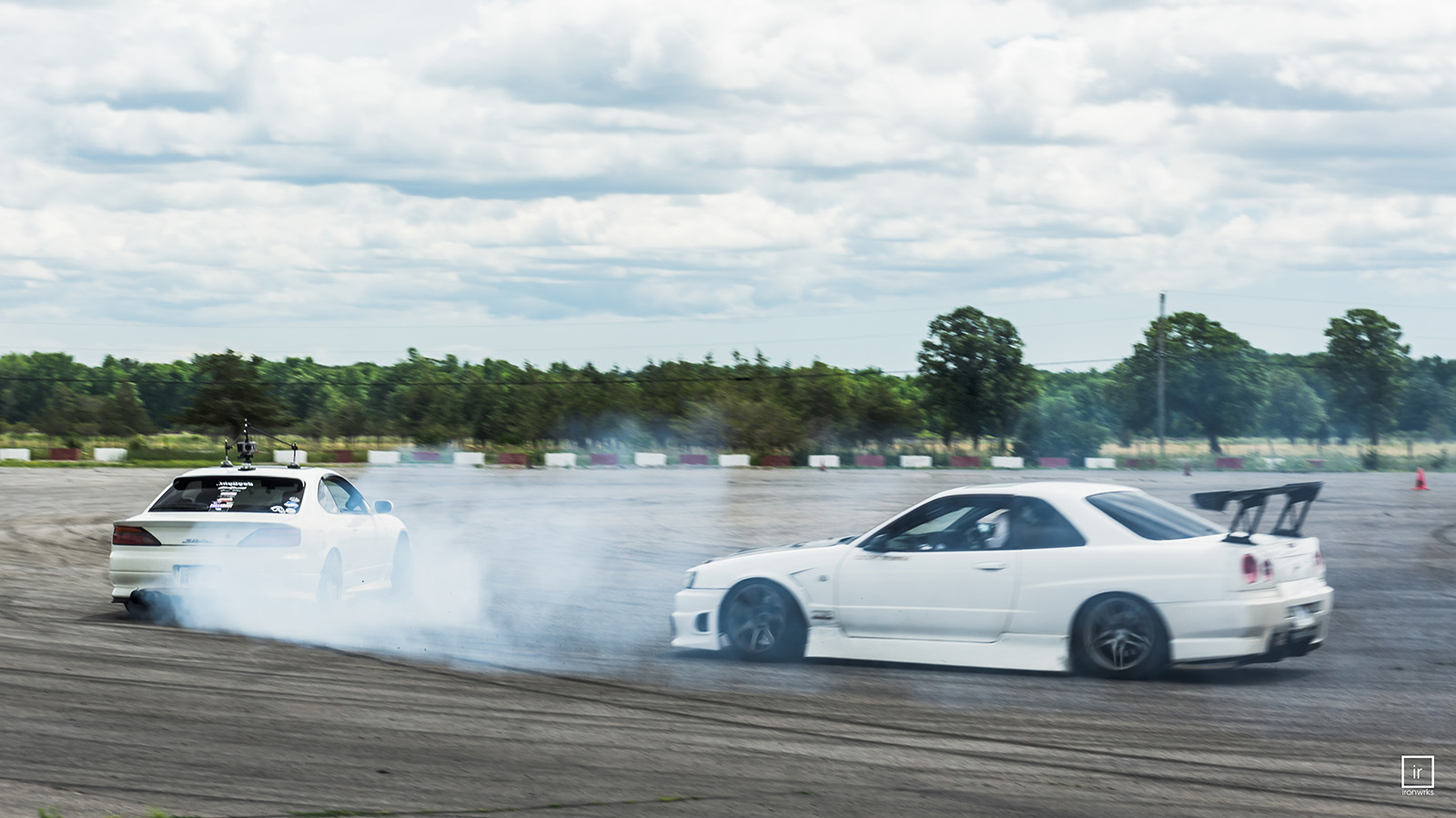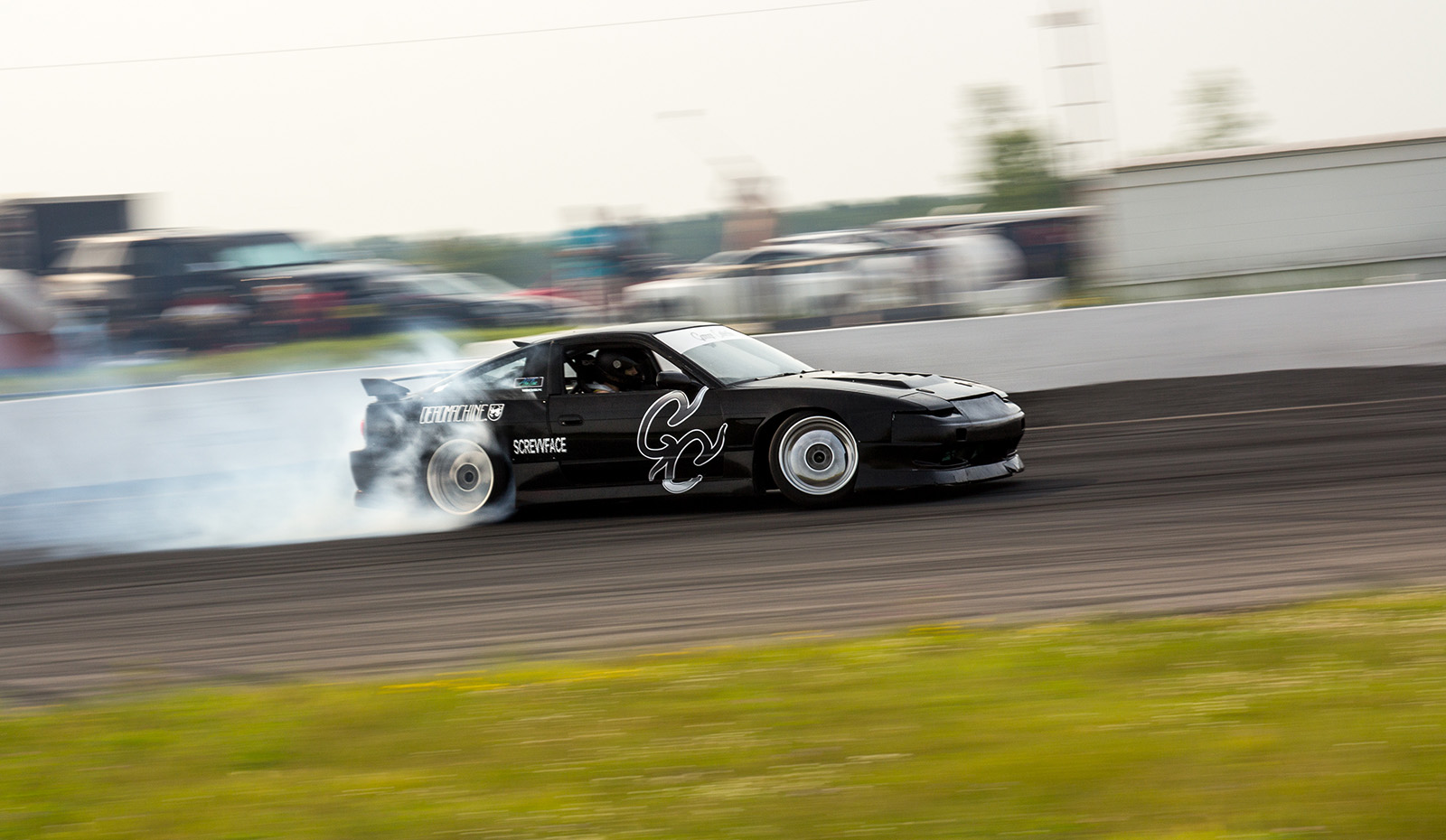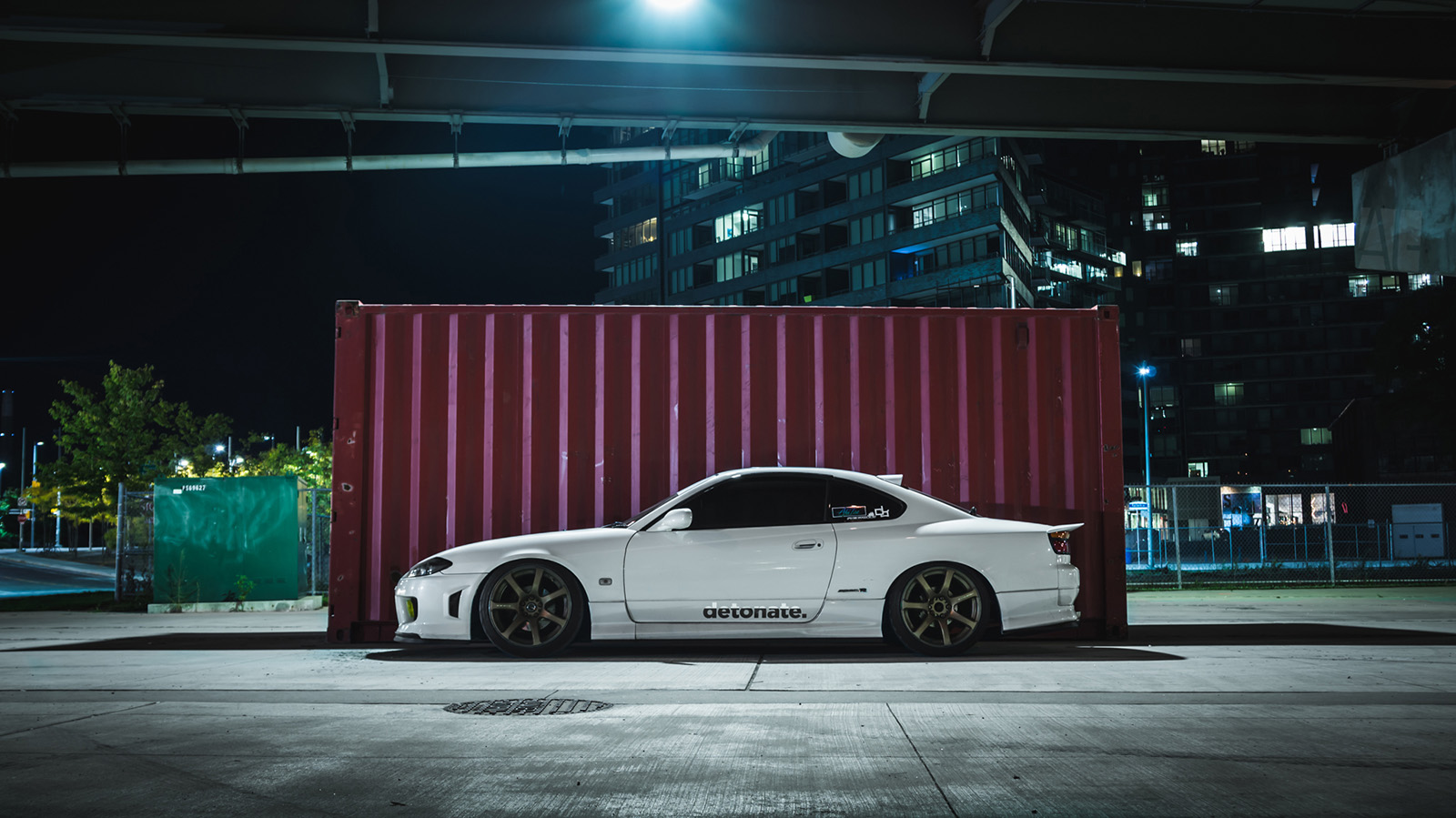Photography by Adam Gordon, Kristian Lamingo, Simon Sheehan, Huy Nguyen
The world of drifting has taken a spot in the limelight in recent years. What started as a style-focused underground movement in Japan has graduated to one of the most watched and talked about professional motorsports of all time. The tires became wider, the engines became more powerful, and the athletes more plentiful, but it all started with humble beginnings. With more new guys entering the world of drift than ever before, it’s important for them to acknowledge that the sport didn’t start with 1000-horsepower engines and angle kits, but rather with grassroots pioneers who kept things simple and fun.
To get some insight into grassroots drifting and what it takes, I sat down for a chat with a good friend of mine who knows his way around the world of drifting. Mike Martino of Garage Collective, an Ontario-based drift team, was happy to provide us with some insight into the basics of drift, as well as his own experiences growing up in the midst of an emerging scene.
Adam Gordon: Hey Mike! As a preface to this interview, can you describe your experience in the industry? How long have you been doing it, and what kind of experience do you have?
Mike Martino: I’ve been in the car industry of Canada for as long as I can remember to be honest. Right from high school I sort of fell into the car scene as your typical “car guy”. I’ve had more jobs than I can remember involving full time, part time, volunteer and even just advising in the car scene. Drifting became part of my life around 2004/05 I think, when there was a huge hype around Japanese drifting in Canada. It sort of just spiraled upwards from there and I had the chance to work with some big names in the community. I’ve run or helped run many different drift series here in Ontario, as well as participated in a ton of state-side events recently, where I’ve gained some incredible friends in the process.
What were the first cars that you ever set up to drift? Tell us about them!
I started with a very tired S13 and a KA24De, just like many before me, which later helped me become a good driver, and taught me many late night lessons on how to break something and get stranded somewhere.
Describe the process of getting ready for a life of drifting, starting with the purchase decision.
In your initial stages of purchase, your ultimate interest should be in how you feel about the car and what history it really brings to you. I grew up in the drifting community on Option videos and your typical outburst of cool old S-chassis drift pics, so it was inevitable I’d end up drifting in an S13 and then onto an S15. When you’re a beginner in the whole atmosphere of drifting, your aspirations are based on what you’ve seen and not what you know.
Everyone in the drifting world knows about S-chassis. What are some underrated or under-utilized platforms out there that you consider promising chassis?
Some great chassis aside from S-chassis are the JZX or R series cars. The JZX90 and JZX100 are becoming very popular in Canada thanks to our import laws, and R32s have been around for ages now. R33s and R34s are also becoming more popular in the Canadian drift scene thanks to the legality of them now. BMW E36 and E46 platforms have also started to become popular because of their affordability.
How can grassroots hopefuls be innovative or spend less without sacrificing safety/quality? Are there any specific components of the car that don’t need to be costly?
You want to start out simple. When you introduce advanced parts, you have to factor in variables like suspension geometry, over centering, linear spring loads, etc. They can be very overwhelming to someone new to drifting. The best advice anyone can give you is “keep it simple, stupid.” Get a good set of off-the-shelf coilovers that are reputable for your application (For example, Stance or HSD for S-chassis). Look into a good suspension arm/link package like SPL or PBM toe rods, TC rods, and upper control arms. Get an alignment at a shop that knows how to adjust multi-link. Get a low-kilometer welded or 2-way differential and go have fun! All of the above can be cost efficient and fun. You don’t need a hydro e-brake because all of the cool kids are doing it. In fact, the true grassroots drivers - guys who have been doing it longer than some of these pros - don’t even bother with a lot of overcomplicated things. Why? Because you don’t need it.
What kind of safety gear do you need to invest in for yourself and your car?
When you’re first starting out you can’t skimp on safety. A good helmet is a must. A fire extinguisher is also a huge must-have. You’re pushing your car to limits it would normally never see on the streets and things can get hot. Very hot. Other than that, I’d suggest long sleeve clothing or a fire retardant suit. God forbid you get trapped in your car upside down while it catches on fire or something. The suit is going to give you those few extra seconds you may need to save your own life, or someone else’s at least.
What kind of tires should be used when you’re first starting out?
A good, grippy, set of front tires are a must-have for drifting. There’s nothing worse than initiating into a turn and understeering into what could be a wall because of the horrible compound you’ve chosen to trust your life on. Those awesome upgraded brakes you put on your car are pretty much useless if your tires are just going to lock up and slide.
For rears, even now, I use the more budget-friendly alternatives like Evergreen or Nankang. Starting out, you ideally want a high tread wear that’s really going to take the heat cycles you’re going to put them through. You don’t want them chunking or delaminating mid-drift. Sizes also play a huge factor because of sidewall flex. Based on car or wheel sizes, you’re going to want to adjust accordingly. I run a 225/40/18 in the rear on a 9.5-inch wheel. When you’re a more advanced driver (with more power, of course) your high quality tires are going to come into play.
Overall, do your research on what’s out there. There have been many advancements in tire compounds at this point, and as much as we’d like to stick to what we know, things change. My favorite front tires were the BFG G-Force KDW but they’ve discontinued my typical size so I’ve been using Nankang NS2R at this point. For rears I’ll use anything from a Federal 595 to something cheaper like an Evergreen EU72.
What is the most common mistake you see people make when setting up their drift cars?
Over-building. It’s becoming such a common thing for newcomers to do. The fad that is “American Drifting” (i.e. Formula Drift) has become the end goal for all the wrong reasons. You’ll see a lot of newcomers building fully caged tube chassis, aiming for 500+hp when they have zero or minimal seat time. It really puts you back and essentially handicaps your learning curve because you’ll never know what it’s like to have to take the necessary steps into honing your driving skills versus the car driving you.
When do you reach a point where angle kits or more power become things you should look towards?
My S13 had just shy of 500hp, a full angle kit, a full cage and every other useless piece of nonsense you can think of in a race car (sans hydro e-brake), and I still drove it on the street here and there. My S15 has maybe 260hp at the moment, but I have more fun driving my S15 because of its reliability and simplistic abilities than I did my S13.
However, at some point your driving skill surpasses what your vehicle can do. That point is where you start assessing what direction you can go in next. Do you want more power or do you want more angle? My best advice is go for a moderately higher power range and some suspension upgrades when you’re ready. Aim for 350-380hp, buy quality parts, and get some pre-made knuckles like Heatmaker or Driftworks. Guys like Julian (Heatmaker) from Animal Style have tons and tons of experience behind the wheel and have basically perfected what it is to have a grassroots car.
Once you’ve got your budget drifter together, what kind of track events should you be looking for?
Ones that are fun! Gather a group of friends together and be sociable. Don’t be the typical “I’m not part of the cool group” person who tries to make themselves out to be an “I heart h8ers” kind of person. Drifting is about family, friends and having fun. I’ve connected with people all over the globe now that I would consider to be some of my closest friends, and it was all because of drifting. We’re all here for the same reasons: Style, friends, family and fun.
What’s the easiest/best way to learn to drift? Are there track events that specialize in teaching, or is it all middle-of-the-night horseplay, hoping no one calls the cops?
I want to say stay off the streets, but who am I to tell you what to do? I learned in the industrial areas after a 2 AM phone call from friends. That’s not to say we didn’t get in trouble, though. We got into a lot of trouble, some I regret very much, but it taught me lessons. It taught me that an uncontrolled environment can really hinder your ability to learn. You can’t take a second to assess what’s just happened or learn how to adjust it. It’s kind of like a hit-it-and-quit-it kind of thing – you drift a bit and get the hell out. At the track, things are controlled and specifically designed for you to advance. Your ability to really push yourself is only limited by your fears and comfort. It’s something you’ll learn to step out of the boundaries of with seat time.
What does it take to get comfortable drifting on an open track? Walk us through the motions of getting a feel for the car and track.
Determination and seat time is all it takes. Sitting on the grid with your heart pounding and that sinking stomach feeling is one of the most nerve-racking things you can experience before getting on your way. And then you’re off and everything becomes clear. Your focus is on what speed you’re at without even looking at the cluster. You’re monitoring the sounds your car is making, you’ve assessed the condition of your entry, you adjust your hands, head and feet in movements that look like a dance. The next thing you know you’re moving 160km/h+ initiating into an uphill crested blind turn that you only remember goes left, from a year ago. After that, intuition and muscle memory take over. You start improvising things as well, like in a situation where you may be coming in to hot or too wide. You adjust with left foot braking, clutching in and a slight e-brake pull. It pulls you outwards, you’ve scrubbed some speed and you need to make it past that inner apex, so you gas it with the clutch in and then release giving you that extra bit of power you needed. Everything happens so quickly as you coast out of that first turn, transitioning into the next connecting 2, 3, 4 and even more turns like a smooth roller coaster.
Is there a certain type of technique or style you should aim for in your driving? Some people seem really enamored with wall-tapping right off the bat.
Why would someone want to bash their car off the wall? That’s just nonsense. You’ve worked hard for the vehicle you’re showcasing. Hone your skills and learn proximity without hitting something. Being in control of a situation is way cooler than the missile-hype-dude smashing his POS into the wall, destroying the car and track. Drifting is about style - it always has been. Expressive, tasteful driving is what Japan began this with. Would you rather watch a bunch of derby-type cars following each other on a track drifting, or would you rather watch that awesome FC you’ve idolized for a year on Facebook with an incredible livery and well executed/functional fitment slay the track in tandem with other awesome looking cars not bashing into each other like some king of the hill match? Personally I’d choose the latter.
Do you have any advice for the people who think they need 400+ horsepower to drift?
Yeah. Quit now, or reassess your thinking. I started with a very tired S13 and a KA24De. I drifted with a VLSD at first, which I quickly learned was scary and unpredictable. I swapped in a welded diff that a friend welded up for me at the time, and bought some off-the-shelf coilovers. I honed my driving ability into driving the car versus it driving me. I needed to know how to control every inch of where I wanted my rear tires to be on the track and how fast I wanted to be going. Like I said before, you eventually surpass your cars ability. You learn to use what you have. I like to compare it to a spoiled kid who always gets what he wanted. They’ll never know the true value of working for things like someone who had to build what they had. When you value your own skill as a learning experience you don’t give up so easily. You don’t just toss it out and move onto the next thing - you progress.
If you could go back in time and talk to yourself before you started drifting, what advice would you give yourself?
That all those late nights under your car on the side of the road 200km away from your shop or house will never end. They will always happen, but what you need to take away from that isn’t the unfortunate situation - it’s the memories you’re making and the friends who are sticking around to help you out. A lot of things can be done on your own in life. Drifting isn’t one of them. Drifting is something you should be experiencing with the people you have the most fun with.
Related Articles
 KW Releases V3s Compatible with BMW Air Suspension and EVs
KW Releases V3s Compatible with BMW Air Suspension and EVs
 What Should We Look For At SEMA 2025?
What Should We Look For At SEMA 2025?
 Air Lift Performance ALP4 - Next Level Air Suspension Management
Air Lift Performance ALP4 - Next Level Air Suspension Management
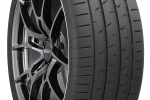 Toyo Tires Canada Introduces Toyo Proxes Sport 2 Max Performance Summer Tire
Toyo Tires Canada Introduces Toyo Proxes Sport 2 Max Performance Summer Tire
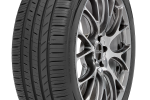 Toyo Tires New Proxes Sport A/S+ Ultra-High Performance All-Season Tire
Toyo Tires New Proxes Sport A/S+ Ultra-High Performance All-Season Tire
 From Ordinary to Extraordinary: Jaiden Zheng's Liberty Walked E92 M3
From Ordinary to Extraordinary: Jaiden Zheng's Liberty Walked E92 M3



